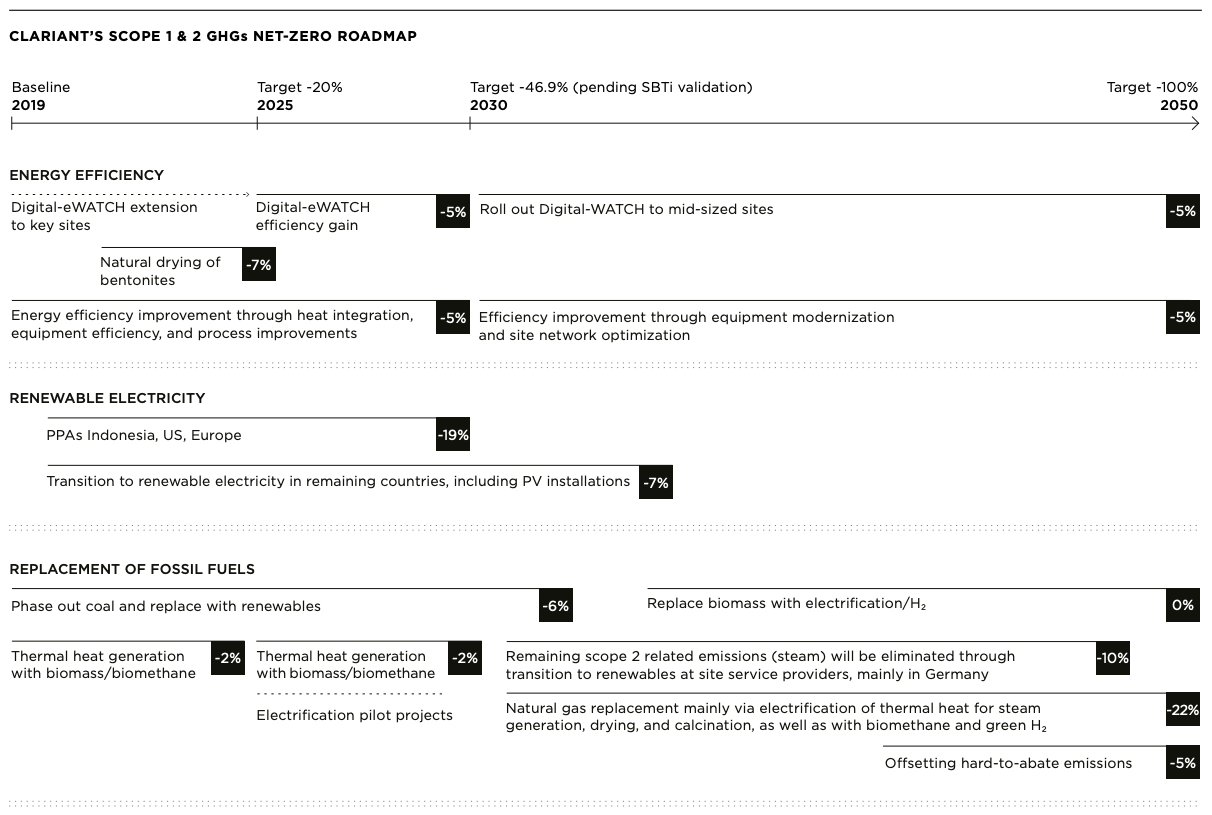Climate change is widely recognized as one of the greatest challenges of our time, and greenhouse gas emissions are at their highest levels in human history. Droughts, heat waves, melting glaciers, and biodiversity loss pose serious risks to life as we know it.
Customers are increasingly searching for low-carbon alternatives, including materials produced using renewable energy, to meet their own climate targets. Meanwhile, an increasing number of financial players are requesting investor-grade data for non-financial information.
At Clariant, we are fully committed to operating sustainably and reducing pollution from business activities. Achieving our sustainability goals is core to our journey, but helping our customers reach theirs is just as important.
Reducing our own carbon footprint:
Science-based climate targets
Clariant defined climate targets in line with the Science Based Targets initiative (SBTi) which were approved by the SBTi in 2021. These set out absolute reductions for scope 1, 2 and 3 greenhouse gas emissions between 2019 to 2030. We have also set ourselves a net-zero target on scope 1 and 2 emissions by 2050, in line with the 1.5°C pathway of the Paris Agreement.
To achieve this, we have developed a detailed roadmap, which includes improving energy efficiency, using renewable electricity, and replacing fossil fuels. The reduction plan contains several measures with different timelines, reflecting technology availability, market availability, and integration of improvement and enhancement projects. The remaining 5% of scope 1 and 2 emissions will be offset with certificates.
-46.9%
scope 1+2 absolute greenhouse gas emissions
-27.5%
scope 3 absolute greenhouse gas emissions

According to the SBTi Monitoring Report 2022, Clariant was one of the first chemical companies to have its absolute SBTi targets approved for Scope 1&2 and Scope 3 emissions in 2021. To build on this progress, Clariant has re-submitted its targets for validation in 2024, further increasing its ambition for 2030. The new targets include a 46.9% reduction in Scope 1&2 emissions and a 27.5% reduction in Scope 3 emissions, covering Category 1 (Purchased goods and services) and Category 12 (End-of-life treatment of sold products).
Environmental targets
We want to continuously reduce emissions to air, prevent waste, and protect the soil. That is why we are committed to operating our plants safely and efficiently, and to using resources responsibly.
This commitment to environmental sustainability is an ethical obligation for Clariant and is reflected in our responsible approach to managing vital resources such as water, and our commitment to run our operations with zero pollution and minimal waste.

- 20%
water intake
- 25%
waste water
100%
of sites in areas of high water stress with advanced water management
- 40%
landfilled non-hazardous waste
- 25%
hazardous waste
- 30%
nitrogen oxide (NOx) emissions
Learn more about our approach to zero waste and pollution.
Creating value for customers with low-carbon, high-performing solutions
At Clariant, we offer innovative products that reduce carbon footprints while maintaining or enhancing performance standards. By focusing on energy efficiency, renewable resources, and biodegradable materials, we enable our customers to achieve their sustainability goals, optimize operational efficiencies, and meet the growing demand for sustainable products.


Calculating product carbon footprints with Clariant’s CliMate tool
To further increase transparency for our customers and along the value chains regarding the carbon footprint of our products, Clariant’s CliMate tool is an advanced automated system developed for calculating product carbon footprints (PCFs). CliMate quantifies significant greenhouse gas (GHG) emissions from cradle to gate, expressing potential global warming contributions in kg of CO₂ equivalents per kg of product. This powerful tool delivers consistent GHG emission data across Clariant’s product portfolio, aligning with ISO 1467:2018 and the Together for Sustainability (TfS) Guideline v3.0.



